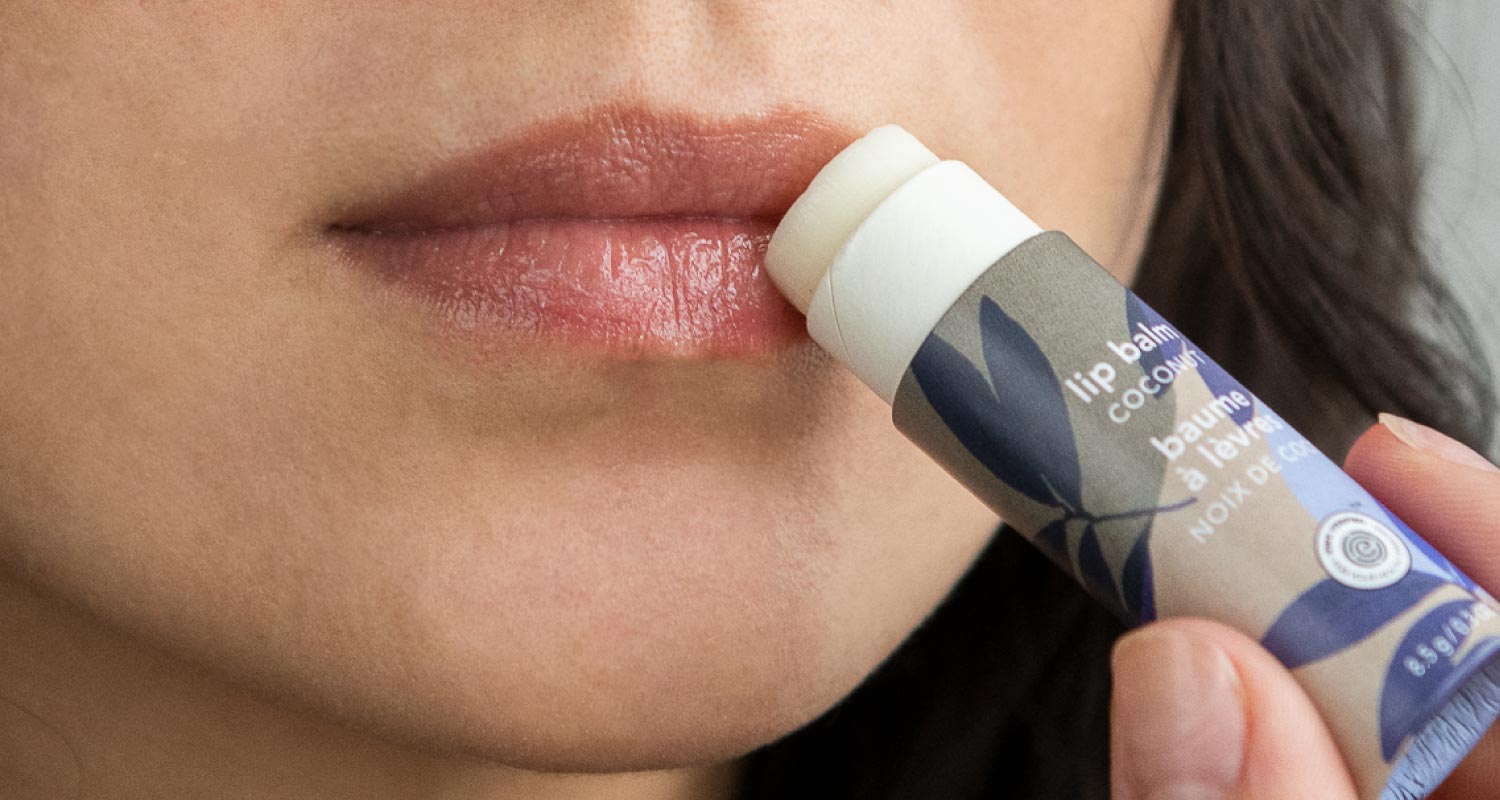
The skin of the lips is not only delicate, it’s also fragile. No matter the season, the lips are always exposed to the external factors like the wind and the sun.
To keep your radiant smile, it is essential to take care of your lips by choosing a lip balm that is nourishing, moisturizing, and, most importantly, made without worrying ingredients that may be harmful to your health.

Everything you put on your lips isn’t just absorbed by the thin skin covering them, but it’s often swallowed when eating or drinking.
In other words, even if you have healthy eating habits, you can still, unknowingly, ingest harmful or toxic substances if you are not careful when choosing your lip balm.
Here are 5 lip balm ingredients to avoid :
1. Parabens
Not all parabens are dangerous, but these should be avoided in all body care and household products: methylparaben, propylparaben, butylparaben and isobutylparaben.
Having been used in the world of cosmetics since 1920, these substances have been recognized as major endocrine disruptors.1 According to the EWG, they have even been linked to an increased risk of cancer.2
2. Phthalates
Much like parabens, phthalates are often used in beauty products, but as a preservative. For example, they help fragrances last longer.
However, they are associated with several health problems like cancer, hormonal disruption, and disruption of the reproductive system.3
3. Butylated Hydroxytoluene or BHT
This substance, which is better known by its nickname BHT, is a synthetic preservative created through carbochemistry that prevents oxidation and mould in cosmetics.
It is also considered an endocrine disruptor that can destabilize reproductive hormones in both men and women and can, according to the International Agency for Research on Cancer (IARC), promote the development of existing tumours.4
Needless to say, avoid BHT as much as possible.
4. Mineral oils
Despite being prohibited in food products, mineral oils are authorized in beauty products. The problem is when they find their way into lip balms, these suspected carcinogenic substances are involuntarily swallowed!5
Often part of wax formulas, mineral oils can be avoided by spotting the following ingredients: mineral oil, paraffinum liquidum, petrolatum, paraffin, petrolatum jelly, ozokerite, ceresin, polyisobutilene, synthetic wax, cera microcristallina, hydrogenated polyisobutene, methylsilanol, isododecane, isohexadecane, silicone quaternium.
5. PEG-8
For a lip balm, it is advisable to avoid products containing PEG-8. This ingredient helps with moisture retention and penetration of the product into the skin layers which is what we look for in a lip balm.
However, PEG-8 is regularly contaminated with impurities such as 1,4-dioxane. The latter is a chemical substance that is toxic, and in the face of regular use, it increases the risk of cancer and damage to the cells of the liver, respiratory system and kidneys1.
It is therefore advisable to reduce the use of products containing PEG-8.
What type of lip balm to choose?

The safest options are those made with naturally sourced ingredients. These plastic-free lip balms with aromas of fresh mint, coconut, mango, and watermelon rely on the moisturizing and comforting power of shea butter and coconut oil to keep your lips silky smooth, without leaving a trace on the environment.
There’s also a scentless option that contains soothing almond oil, known for its ability to appease even the driest skin.
Because there is no worse feeling than sunburned lips, you should consider searching for a lip balm with extra protection – especially in the summer when you spend more time in the sun. This biodegradable lip balm provides SPF 15 broad spectrum protection thanks to our key ingredient: non-nano zinc oxide.
According to the EWG, it is the safest and most effective sunscreen filter!
If your skin is prone to react to products, be sure to select a lip balm with hypoallergenic ingredients.
The online description of the product should tell you if they are! In short, here’s a list of ingredients that will naturally keep your lips irresistibly kissable:
- Coconut oil
- Olive oil
- Castor oil
- Grapeseed oil
- Soybean oil
- Shea butter
- Non-nano zinc oxyde (for sun protection)

Is lip balm safe for kids?
As practical as it may be to relieve their chapped lips, lip balm should be used sparingly on children. If you must, use products based on plant-based oils such as sweet almond oil and coconut oil.
Instead, it is recommended that you make sure your little ones are well hydrated by giving them water, foods like watermelon and soup. If they tend to lick their lips or not wipe their mouths after eating, help them get rid of these bad habits that can cause cracking.
Another option – if you are the DIY type – is to create your own homemade lip balm. This is the best way to know exactly what you’re applying on the lips of your babies.
Moisturize more than just your lips
Now that you know more about what lip balm ingredients to avoid, why not think about pampering your entire body by discovering the benefits of clean dry oils and creamy body butters!
No matter your skin type – dry, combination, or oily – your face needs hydration too. The key is choosing an adaptive product! Discover more about the future of your favourite face care line and its star ingredient, phytoglycogen, right here.
You won’t regret it!
Sources
- https://pubmed.ncbi.nlm.nih.gov
- https://www.ewg.org/what-are-parabens
- https://www.safecosmetics.org
- https://davidsuzuki.org
- https://www.quechoisir.org (Only available in French)
- https://www.cancer-environnement.fr (Only available in French)